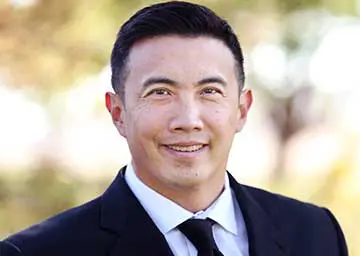Millions of people seek relief from upper back pain or lower back pain each year. While it comes in many forms, all spine pain can disrupt your daily life. Fortunately, many cases are not severe. A great deal of upper back pain or lower back pain is caused by soft tissue strain and sprains that are easily treated. Most can resolve in a matter of weeks with conservative treatment. There are also a variety of causes of spine pain that are more complex: arthritis, stenosis, inflammation, vertebrae or disc damage, and cancer. In these cases, or in the case of debilitating or persistent pain, surgical repair may be required.
The spine is comprised of the cervical, thoracic, lumbar, sacral, and coccygeal regions. Upper back pain – including neck pain – is contained within the cervical and thoracic regions whereas lower back pain encompass the lumbar, sacral, and coccygeal. A vast majority of back pain cases are the result of strain, overuse, posture pressure (e.g. texting neck, slouching in an office chair), and trauma. Risk factors for back pain include lack of exercise, smoking, and carrying excess weight.
Upper back pain and lower back pain are frequently accompanied by stiffness and tightness in the corresponding region. The level of pain may vary in intensity from mild or moderate to intense.
Achieving Upper or Lower Back Pain Relief
During an evaluation by a spine specialist, your physician will review your pain location and intensity as well as factors including individual activity level and recent events. Imaging (e.g. MRI, x-rays) will be used to identify any underlying conditions in order to inform a clinical diagnosis.
Conservative Back Pain Treatments
Medications, topicals, injections, and physical therapy offer the first line of defense in back pain treatment. These conservative treatments offer effective upper back pain relief and lower back pain relief to millions of patients each year. These options should be exhausted prior to considering surgical treatment.
Mediations
Non-steroidal anti-inflammatory drugs (NSAIDs), or over-the-counter medications, such as ibuprofen (Advil), naproxen (Aleve), or acetaminophen (Tylenol), play a key role in back pain management. They can decrease inflammation and offer temporary pain relief. Stronger medications such as muscle relaxers or anticonvulsants (for nerve damage) may be prescribed based on individual symptoms. For severe pain, opioid pain relievers may be prescribed for a limited period of time.
Temperature Treatment and Topicals
As with medications, various strengths of topical ointments and creams are available both over the counter and by prescription. These treatments target localized pain and are applied to the skin.
Heat and ice are common treatments for inflammation, acute back pain, and chronic back pain. Heat combats soft tissue pain and muscle stiffness to improve mobility, whereas ice is a frequent tool to reduce sharp pain, inflammation, and swelling.
Exercise and Stretches
Physical therapy plays an integral role in providing upper back pain relief and lower back pain relief for intermittent or early-stage back pain. Under the supervision of the physician and a physical therapist, these individual therapy plans restore strength and mobility. Exercises and stretches target pain sources and help your muscles provide the needed support.
Injections
For targeted back pain, non-invasive injections can provide effective pain relief. Injections are generally a component of an overall treatment plan including physical therapy. These outpatient procedures combine anesthetics and medication to combat pain, reduce inflammation, and aid in mobility. The most common back pain injections include nerve root injections, trigger point injections, lumbar injections, and cervical epidural steroid injections. Pain relief injections can play a pivotal role in providing the time to strengthen the muscles surrounding the source of pain.
Back Surgery Options
When conservative back pain treatments fail to provide meaningful relief, surgical treatments are available. Surgical options for back pain range from minimally invasive to highly complex procedures. Your AO back specialist can review all of your options to identify the best outcome for your circumstances. Each treatment option requires a thoughtful review of the actual procedure as well as the necessary prep work and recovery plans that support the corresponding treatment plan.
The primary surgical treatments for spine pain include:
- Kyphoplasty (or vertebroplasty) uses a glue-like cement to repair compression fractures. This procedure is a treatment for osteoporosis.
- Spinal laminectomy/spinal decompression is the process of removing the walls of specific vertebrae to relieve pressure on a nerve. This procedure is a treatment for spinal stenosis.
- Foraminotomy removes the bone from the side of the affected vertebrae, leaving an expanded space where the nerve exits the spine. This procedure is a treatment for compressed nerves.
- Diskectomy is the removal of the herniated portion of a disk that is pressing on a nerve. During this procedure, the lamina is removed to reach the ruptured disk. Microdiscectomy is the minimally invasive removal of a portion or all of a disc that is pressing on a nerve. These procedures are treatments for bulging discs.
- Fusion permanently connects multiple bones within the spine to restore stability caused by trauma. This procedure is a treatment for injured or degenerated discs.
- Disk replacement surgery replaces a damaged spinal disk with an artificial insert between your vertebrae. An alternative to fusion, disc replacement maintains spinal movement and requires a shorter recovery.
In some cases, multiple surgical procedures are performed in tandem to balance pain relief with spinal stability. Your physician will guide you through your treatment options and the full benefits and risks associated with them. Back surgery is a significant procedure so it’s important to be fully informed about your options and the right treatment center. Given the vital role the spine plays in our daily lives, a second opinion from a qualified spinal specialist is a prudent step to fully assess your treatment options. Selecting the right care center is equally important. Comparing the costs between private practices and hospital systems will allow you to avoid costly expense surprises and find a trusted provider.
Spine treatment can be complicated but getting the right care information should be simple. Advanced Ortho’s team of spine and neck surgeons are here to help you find relief from your back pain.









